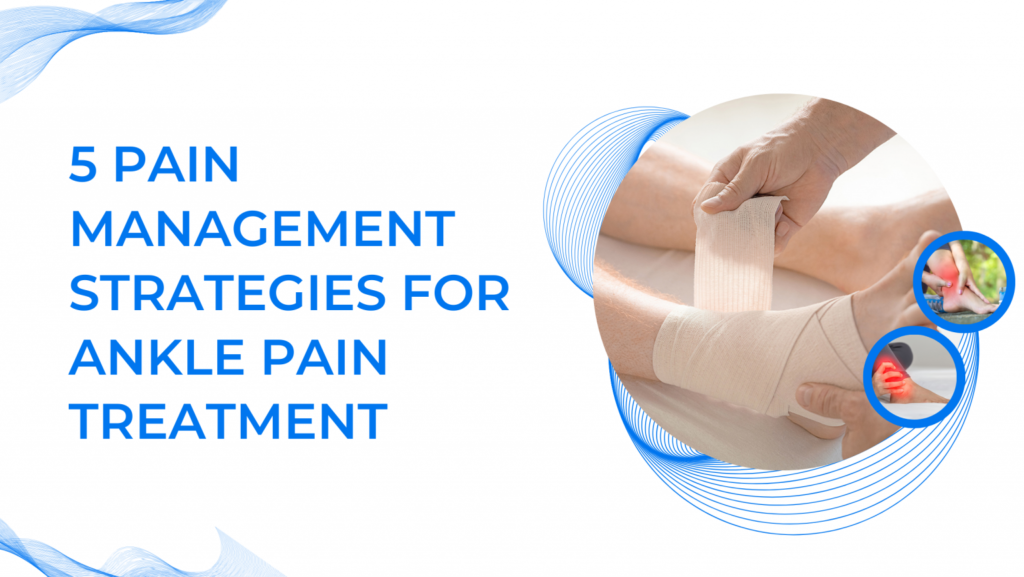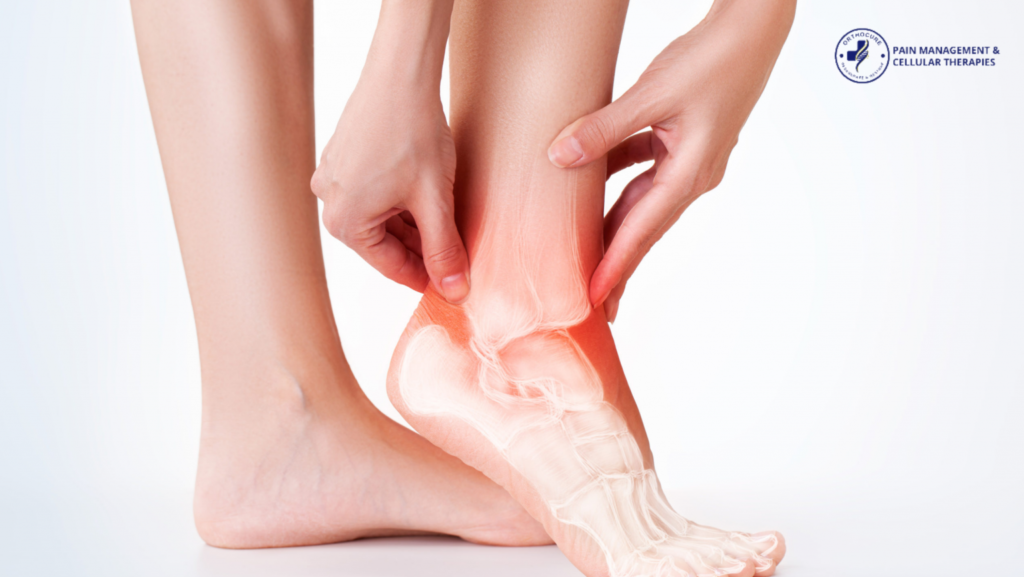
Ankle Pain Management and Treatment
The improvement of any loss of motion, strength, or proprioception is equally vital as the reduction of pain. A meta-analysis discovered that neuromuscular rehabilitation causes function to improve more quickly. A trial of conservative therapy lasting about 2-3 months should be the first step in recurrent lateral ankle pain treatment.
According to studies, a person’s emotional health might affect how they perceive pain. Your quality of life can be enhanced by comprehending the underlying problem and discovering practical pain management services and ankle pain treatment.
Ankle Pain Management and Treatment Strategies
Here are a few tips for ankle pain treatment:
Pain Management Through Medicines
Medication is one of the most important pain management techniques.
- Physical therapies (include massage, hydrotherapy, heat or cold packs, and exercise)
- Psychological treatments (such as meditation, relaxation exercises, and cognitive behavioural therapy)
- Procedures combining the mind and body (like acupuncture)
- Communities of support.
Looking for a Pain Management Doctor to Reduce Your Ankle Pain?
Many pain management doctors suggest non-surgical regenerative therapy is available to help you manage your pain. Often, a mix of therapies and treatments is more efficient than using only one.
However, some sufferers of chronic pain who have not responded to other treatments might gain something from it. To take your medications properly and safely, always follow the directions. By doing this, your risk of experiencing adverse effects can be decreased, your pain will be more likely to be effectively managed, and you won’t require as much medication.
It is best to take medications for chronic pain frequently. If your medications are not performing as expected or are causing issues, such as side effects, speak with your pain management doctor or pharmacist. If you take pain medications for a prolonged period of time, these are more likely to happen.
It’s crucial to employ a number of techniques to lessen pain. Do not just rely on medications. Keeping active and pacing their daily activities to prevent pain flare-ups are two ways that people can reduce the amount of pain they experience (this involves finding the balance between under- and overdoing it) and adopting coping mechanisms to prevent pain triggers.
- Managing pain that is difficult to relieve
- Pain can sometimes last for a long time and be difficult to get rid of. When you are suffering, it’s normal to feel anxious, depressed, or afraid. Here are some ideas for dealing with chronic pain:
- Instead of trying to entirely eliminate the discomfort, concentrate on enhancing your daily functioning.
- Recognize that pain flare-ups can happen and that they might not go away. Through these situations, talk to yourself.
- Learn as much as you can about your disease so that you don’t worry or fret about the discomfort needlessly.
- enlist the aid of your loved ones and friends. Find ways to stay in touch and let them know what kind of help you need.
- By using any strategies that are effective for you, such as talking to friends or pain management specialists, take action to prevent or lessen depression.
- Do not raise your pain medication dosage without first seeing your physician or pharmacist.
- Increasing your dosage might not make your discomfort go away and even hurt you.
- Increase your level of physical activity, consume healthy foods, and make sure you get enough sleep.
- Try not to let the pain prevent you from living the life you want to live. Try reintroducing your favourite activities gradually. If pain flare-ups happen, you might need to reduce some activities; however, you should gradually resume your previous routine.
- Focus on locating enjoyable and fulfilling activities that won’t exacerbate your pain.
- Consult a medical expert, such as a psychologist, for suggestions on new coping mechanisms and abilities.
Contact the Best Pain Management Doctors in Manchester
Non-Medicinal Ankle Pain Treatment
Use ice packs right away after an injury to minimise swelling, whether it’s hot or cold. For the relief of persistent muscle or joint ailments, heat packs are preferable.
Walking, stretching, strengthening, or aerobic activities are examples of physical therapy that can help with pain management, mobility maintenance, and mood enhancement. To prevent overdoing it, you might need to increase your workout very gradually.
Another form of physical treatment is massage; it is more effective for soft tissue injuries and should be avoided if joint discomfort is present. Although there is some evidence that massage may help with pain management, it is not advised as a long-term therapy. Some ankle pain treatment techniques for unwinding and reducing stress, such as yoga and meditation

- Cognitive Therapy for Ankle Pain Management
Cognitive behaviour therapy is a type of psychological counselling that can teach you how to alter your thoughts about pain, which will then alter your feelings and behaviours. This is an effective method for teaching yourself how to control chronic pain.
- Acupuncture Treatments for Ankle Pain Management
A part of traditional Chinese medicine is acupuncture. Thin needles are inserted into predetermined skin sites during acupuncture treatments. By releasing organic painkillers, it seeks to rebalance the body and promote healing (endorphins). Some people discover that acupuncture lessens the intensity of their pain while preserving their ability to operate. Studies on the efficiency of acupuncture in treating pain, however, are conflicting.
Low voltage electrical currents are passed through the skin by electrodes during transcutaneous electrical nerve stimulation therapy, which causes the body to produce pain-relieving chemicals. To support the use of TENS for the management of various chronic pain syndromes, there is not enough published evidence.
Self-care Strategies for Ankle Pain Prevention
The following are the most typical self-care strategies for ankle pain treatment:
- Rest: You should avoid standing for a while if you’ve recently sustained an injury like a sprain. Find out from your doctor how long you should sleep. To avoid putting pressure on your ankle, you can get around with the use of crutches or a walking boot.
- Compression: To reduce swelling, talk to your doctor about placing an elastic bandage around your ankle. Avoid wrapping it too tightly.
- Elevation: Swelling is reduced by resting with your ankle raised over your heart. Attempting to sleep at night with your foot elevated is another option.
Call the Experts to Get the Ankle Pain Treatment As Soon As Possible

